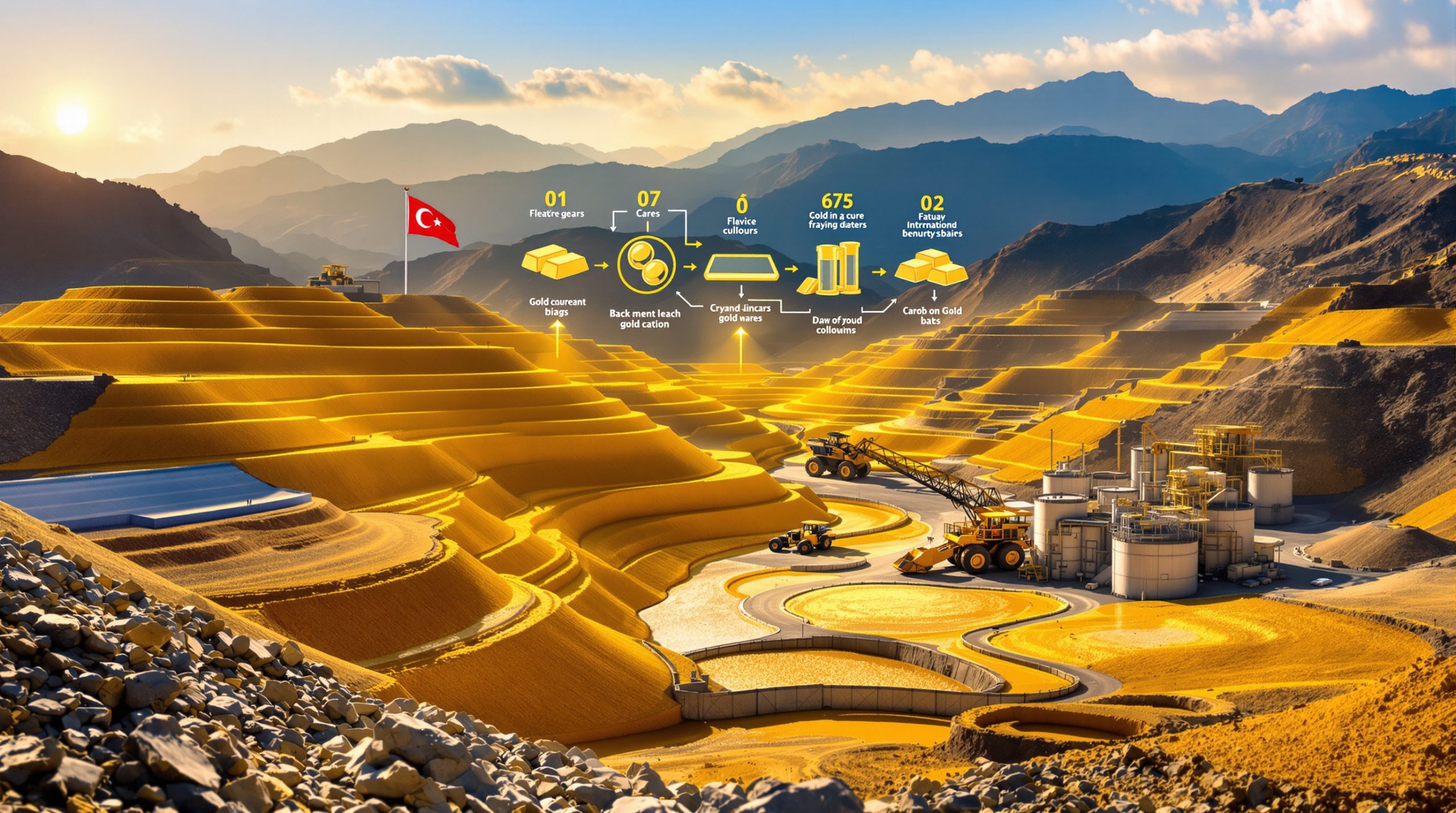Australia's Resource Export Forecast: Iron Ore Dominance and Gold's Rising Influence
Australia's resources and energy export earnings are projected to experience a slight decline from record highs, dropping to $369 billion in 2025-26 from $385 billion in 2024-25. This adjustment reflects softening international prices despite steady demand and growing export volumes across key commodities.
The 4.2% decrease from the previous year's record highs doesn't signal a fundamental weakness in the sector but rather a normalization of prices after an exceptional period of growth.
Resources and Northern Australia Minister Madeleine King emphasized the sector's resilience, stating that the resources and energy sector remains strong with gold and critical minerals playing increasingly important roles in the export mix.
What makes iron ore Australia's export champion?
Iron ore remains Australia's undisputed export leader, constituting 25% of all resource and energy commodities over the forecast period. While volumes are expected to increase through 2027, price pressures could reduce export values from $116.9 billion to $113 billion in 2025-26, with a further decline to $103 billion anticipated in 2026-27.
The iron ore sector's resilience stems from its established infrastructure, operational efficiency, and strategic positioning to serve Asian markets, particularly China. Despite global economic headwinds, the commodity's fundamental demand remains strong due to ongoing urbanization and infrastructure development in emerging economies.
Importantly, the projected $3.9 billion decrease in 2025-26 export value is attributed to price declines rather than volume reductions, highlighting the sector's operational strength despite market volatility. Understanding the iron ore price forecast is crucial for investors and industry stakeholders.
Australia's competitive advantage in iron ore production comes from several factors:
- World-class deposits with high iron content
- Proximity to major Asian markets
- Efficient logistics chains with dedicated rail and port facilities
- Advanced mining technologies that maximize productivity
- Strong track record of reliable supply during market disruptions
Why is gold experiencing a dramatic export surge?
Gold exports are forecast to increase significantly, rising by $12 billion to reach $60 billion in 2025-26. This remarkable 25% year-over-year growth positions gold firmly as Australia's second-largest resource export after iron ore.
This substantial growth is driven by:
- Substantial increases in production volumes
- Strong price performance in global markets
- Gold's traditional role as a safe-haven asset during economic uncertainty
- Growing industrial applications beyond jewelry and investment
Resources and Northern Australia Minister Madeleine King highlighted gold's historical and contemporary importance, noting: "The discovery of gold helped build this nation and gold mining is still creating wealth and jobs for our economy today."
The precious metal's resurgence reflects both cyclical market factors and structural changes in global demand patterns. As economic uncertainties persist globally, investors continue to seek safe-haven assets, with gold prices analysis showing that the metal has been a primary beneficiary of this sentiment.
How are coal exports expected to perform?
Metallurgical Coal
- Export volumes projected to increase after H1 2025
- Earnings expected to decline from $40 billion to $36 billion in 2025-26
- Stabilization anticipated in 2026-27
Thermal Coal
- Export volumes likely to increase in H2 2025
- Overall export values expected to decline over the next two years
- Softening demand from key markets influencing the downward trend
Both coal categories face similar challenges, with price pressures outweighing volume increases. For metallurgical coal, the steel industry's evolving production methods and environmental considerations are influencing demand patterns.
Thermal coal faces more structural challenges, as many countries accelerate their transition away from coal-fired power generation. However, the pace of this transition varies significantly by region, with some markets continuing to rely heavily on thermal coal imports.
What's driving copper's export growth?
Copper exports are forecast to rise from $13 billion in 2024-25 to $16 billion in 2026-27, supported by:
- Price increases to an average of US$9,800 per tonne in the September quarter
- Projected rise to US$10,100 per tonne by 2027
- Growing demand from clean energy technologies and data centers
- Expanding electrical infrastructure requirements globally
Export volumes are expected to increase substantially from 768 kilotonnes in 2024-25 to 962 kilotonnes in 2026-27, representing a remarkable 25.3% growth. This expansion is driven by new mine developments and expansion of existing operations.
The easing of trade restrictions between the United States and China has contributed to improved market conditions for copper, illustrating the importance of geopolitical factors in commodity markets.
Copper's status as a critical mineral for the energy transition makes its growth trajectory particularly significant. Investors looking to capitalize on this trend should explore copper investment strategies to maximize opportunities in this growing sector.
How is the lithium market recovering?
After experiencing a significant price slump earlier in 2025, lithium is showing strong recovery signs:
- Spodumene concentrate prices have rebounded nearly 70%, reaching approximately US$1,000 per tonne in late August
- Export earnings projected to rise from $4.8 billion in 2024-25 to over $6.1 billion in 2026-27
- Renewed demand from battery manufacturers supporting the price recovery
- Long-term growth outlook remains positive despite short-term volatility
The lithium market's volatility stems from several factors, including rapid capacity expansion, fluctuating electric vehicle sales projections, and inventory management throughout the battery supply chain. However, the fundamental demand drivers remain intact as global electrification continues.
Australia's position as a leading lithium producer gives it significant influence in this growing market. The country's abundant resources, technical expertise, and Australian lithium innovations make it an attractive destination for lithium investment despite periodic market corrections.
What's the outlook for other critical minerals?
Nickel
- Prices expected to remain subdued in the short term
- Demand projected to rise steadily over the next two years
- EV battery applications driving long-term growth potential
Uranium
- Export values forecast to remain stable at $1.5 billion annually
- Prices holding at US$70-75 per pound in early September quarter
- Projected increase to an average of US$88 per pound by 2027
- Growing interest in nuclear energy supporting long-term demand
The critical minerals sector represents a strategic opportunity for Australia as global demand for these resources increases. The energy transition and technological advances in electronics, defense, and aerospace are driving demand for these specialized materials.
Uranium's stable outlook reflects the gradual but steady expansion of nuclear power capacity worldwide. Several countries are reconsidering nuclear energy as part of their low-carbon energy strategies, potentially creating additional demand for Australian uranium exports. Investors should consider uranium investment strategies as part of a diversified resources portfolio.
How do these forecasts reflect Australia's changing export mix?
The shifting balance between traditional and emerging resource exports highlights Australia's evolving position in global markets:
- Traditional strength maintenance: Iron ore and coal continue to provide the foundation of export earnings
- Precious metals resurgence: Gold's growing contribution demonstrates its enduring value
- Critical minerals emergence: Lithium, copper, and uranium show increasing significance
- Diversification trend: The overall export mix is becoming more balanced across commodity types
This evolution allows Australia to maintain its resource export strength while adapting to changing global demand patterns. The country's geological diversity provides natural advantages across multiple commodity categories, reducing its vulnerability to price fluctuations in any single market.
The progressive shift toward critical minerals aligns with global technology trends and sustainability objectives, positioning Australia favorably in high-growth sectors while maintaining its traditional export strengths.
What factors could influence these export projections?
Several variables could impact the accuracy of these forecasts:
- Global economic growth rates, particularly in China and developing Asia
- Geopolitical tensions affecting trade flows and commodity prices
- Pace of energy transition and clean technology adoption
- Currency fluctuations, especially AUD/USD exchange rates
- Development timelines for new mining projects
- Supply chain disruptions or technological breakthroughs
These factors interact in complex ways, potentially amplifying or mitigating their individual impacts. For instance, slower-than-expected global growth could depress commodity prices, but a weaker Australian dollar could partially offset this effect for exporters.
Infrastructure constraints present another consideration, with port capacity and logistics networks potentially limiting the speed at which export volumes can grow. Major expansion projects in Western Australia and Queensland aim to address these constraints, but their timely completion remains critical.
What are the key export trends by commodity?
| Commodity | 2024-25 Exports | 2025-26 Forecast | 2026-27 Forecast | Key Trend |
|---|---|---|---|---|
| Iron Ore | $116.9B | $113B | $103B | Volume ↑, Price ↓ |
| Gold | $48B | $60B | Not specified | Strong growth |
| Metallurgical Coal | $40B | $36B | Stable | Initial decline, then stabilization |
| Copper | $13B | Not specified | $16B | Steady growth |
| Lithium | $4.8B | Not specified | $6.1B | Recovery and growth |
| Uranium | $1.5B | $1.5B | $1.5B | Stable with price ↑ |
This table highlights the varying trajectories across Australia's resource export portfolio. While traditional exports like iron ore and coal face some price headwinds, emerging commodities like copper and lithium show stronger growth potential.
The contrasting trends illustrate the benefit of Australia's diverse resource base, with growth in some sectors helping to offset challenges in others. This diversity provides resilience to the overall export sector despite individual commodity volatility.
FAQ: Australia's Resource Export Outlook
How significant is Australia's resource sector to the national economy?
Australia's resources and energy exports, valued at $385 billion in 2024-25, represent a substantial portion of the nation's total export earnings and contribute significantly to GDP, employment, and government revenue.
Will iron ore remain Australia's top export in the long term?
While iron ore is projected to maintain its position as Australia's leading resource export through the forecast period, its share may gradually decrease as critical minerals and precious metals gain importance in the global transition to clean energy.
What impact will the energy transition have on Australia's coal exports?
The energy transition is expected to create diverging paths for thermal and metallurgical coal. Thermal coal faces declining demand from power generation, while metallurgical coal may see more sustained demand for steel production, though both face long-term structural challenges.
How is Australia positioned in the global critical minerals supply chain?
Australia holds significant advantages in critical minerals supply, including established mining expertise, political stability, and substantial reserves. The country is actively developing its position in lithium, rare earths, copper, and other minerals essential for clean energy technologies.
What risks could derail Australia's resource export projections?
Major risks include sharper-than-expected economic slowdowns in key markets, particularly China; accelerated shifts in energy consumption patterns; trade disputes or sanctions; and potential oversupply in specific commodity markets leading to price collapses.
Further Exploration
Readers interested in learning more about Australia's resource export forecasts can also explore related educational content from the Australian Government's Department of Industry, which publishes quarterly updates on resources and energy outlook.
The department's comprehensive analysis provides valuable insights into market dynamics, price trends, and volume projections across the full spectrum of Australia's resource exports. These reports offer essential information for investors, industry participants, and policy makers navigating the complex global commodities landscape.
Environmental and social governance (ESG) considerations are increasingly influencing investment and purchasing decisions in global resource markets. Australian producers are adapting to these changing expectations by implementing more sustainable operational practices and transparent reporting standards across the mining value chain.
Ready to Spot the Next Major Mineral Discovery?
Get instant alerts on significant ASX mineral discoveries through Discovery Alert's proprietary Discovery IQ model, turning complex data into actionable investment insights. Explore why major discoveries can generate substantial returns by visiting the Discovery Alert's dedicated discoveries page and position yourself ahead of the market.




